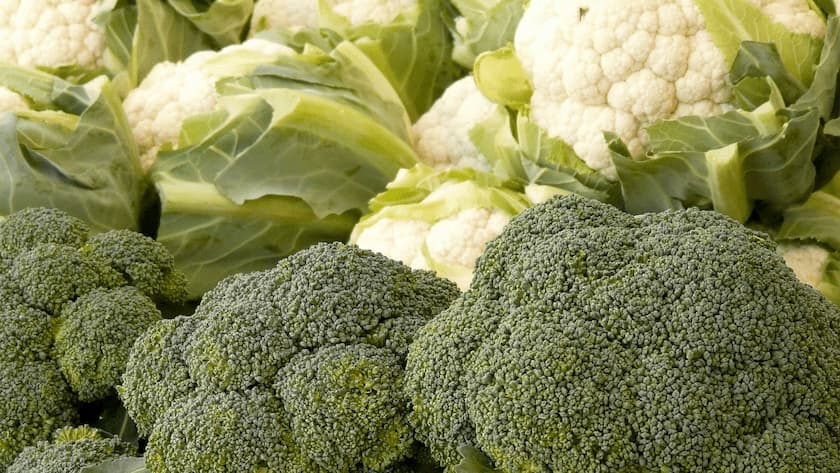Given how popular the topic of protein intake is in the health and fitness industry, I’d surmise that the majority of readers probably have at least a basic understanding of how proteins function physiologically. But fear not if that’s not the case; you’ve come to the right place to learn just what proteins are and their roles in the human body.
All proteins are comprised of amino acids: organic, nitrogen-containing compounds that function as chemical messengers and as intermediates in metabolic pathways. Amino acids can be linked together with peptide bonds to form proteins.
What Are Amino Acids?
There are 20 amino acids that commonly occur in nature. Of these twenty amino acids, nine are considered essential for humans, with the remaining 11 being non-essential.
This is to say that the essential amino acids (EAAs) must be obtained through diet as the cells of humans cannot synthesize these amino acids. We will touch more on the importance of EAAs and nonessential amino acids (NEAAs) later.

It may help to think of amino acids as the building blocks of proteins. Therefore, proteins are the fundamental units of muscle tissue as muscles, specifically skeletal muscles, serve as bodily reservoirs of amino acids. [2]
For better or for worse, many gym-goers tend to go overboard on their protein intake because they quickly associate it with muscle building and a more-is-better attitude.
While a nominal amount of protein intake is certainly vital to building and maintaining muscle tissue, it is not necessary or advised to overload your diet with excessive amounts of protein. Doing so won’t help you build “extra” muscle. Remember, more isn’t necessarily better; better is better.
Assessing the Quality of Protein Sources
As mentioned before, the health and fitness industry has a propensity to divide topics into polar extremes, leaving a gaping hole in between the two. It’s not surprising then that the topic of protein sources would fall victim to this trend.
So what really is best when it comes to protein source? Is it whey, casein, egg, animal, soy, none of the above, all of the above? Moreover, is there a necessity to vary between these sources to sort of “cover all the bases” or can one achieve optimal results subsisting on a single, ideal protein source?
These are all good questions, and thankfully, there is quite a bit of literature to help us form some conclusions and hopefully put your mind at ease.

If we break down what it means for a protein source to be “best,” we are looking for a protein that maximizes muscle protein synthesis (MPS) in response to feeding and a protein that is well digested.
How Muscle Protein Synthesis Works
Like many metabolic pathways, MPS is under strict control by the mammalian target of rapamycin (mTOR) protein. [3]
The mTOR protein is the backbone of mTOR protein complexes which initiate protein synthesis; in turn, MPS can induce cell growth and proliferation, so long as protein breakdown is not excessive. [4]
It has been explained in mmany studies that a key factor for activation of mTOR, and thus MPS, is the amino acid L-leucine. [5,6,7] Also, studies show that the proportion of leucine in a given protein source has a direct effect on the peak MPS rate achieved in the post-meal period. [8,9]
The lesson to be learned from these findings is that to get the most out of protein, it is vital to ingest sources of protein that contain sufficient amounts of EAAs and a nominal amount of leucine.
Recall that EAAs must be obtained from exogenous sources such as diet and supplementation since humans can’t synthesize them endogenously. Naturally, whey protein, the proclaimed “gold standard” of protein supplementation for many gym-goers, is one of, if not the best source of EAAs, and more importantly of L-leucine.

Are Protein Digestive Rates Important?
Gym goers often wonder if the speed of protein digestion makes a big difference in the grand scheme. The short answer is no.
Casein and whey proteins are respectively thought of as slow and fast digesting proteins. The slower digestive rate of casein means that it raises blood amino acid values slowly over a longer period of time; whey protein, on the contrary, does the inverse.
Hence, gym goers infer that ingesting whey protein supplements immediately post-exercise is ideal as it provides a rapid increase in blood amino acids and is better for MPS.
Contrarily, many people use casein before long periods without food, like just before going to bed.
More importantly, literature reviews show that combining multiple protein sources is more effective than depending on a single source over and over. [10, 11] For example, fortifying the high leucine content of whey with the slow digestive rate of casein induces an increase in MPS for several hours. This effect is not observed with just whey protein since it is digested quickly.
Getting the Most out of Your Protein
The main message to take home is that protein source does matter since MPS is differentially stimulated in proportion to the EAA content, and specifically L-leucine, of each meal.
Based on research, it is safe to say that 30 or more grams of a leucine-rich protein source is enough to elevate, and likely maximize, the MPS response to feeding for a solid three to four hours. [12, 13]
Furthermore, you can obtain the EAAs and l-leucine from various food sources in a single meal so long as you still reach the overall quota for the protein necessary to maximize MPS.
For example, if you’re a vegetarian, you would likely want to supplement with whey protein since vegetable sources of protein, like soy, are lacking in leucine content.
Contrarily, others may not need as much (or any) supplemental protein as animal and animal-derived proteins are usually full of EAAs.

Variation in protein needs
Note that this is simply a baseline recommendation for gym goers, not a definitive rule. Thus, individual differences in protein needs occur due to factors like body composition, age, genetics, disease, immune complications, and performance-enhancing drugs.
Moreover, there is little-to-no research that confirms the body doesn’t absorb more than 30-50g of protein at a given moment. In fact, research supports that the body can indeed digest quite a large amount; it just takes longer than a smaller dose. [1]
Basically, rather than just redirecting excess protein to your colon, the rate of digestion compensates to reduce the supply of nutrients being sent to the anterior small intestine and the stomach delays gastric processes.
Take-Home Points
The absolute extremists might ask if eating 200g of protein is necessary? Well frankly, no, because not all of that will be put to “good use,” so to speak.
Protein can be converted to fat, but the pathways to do so are inefficient biochemically, making the conversion trivial.
The majority of protein that isn’t used for MPS or other anabolic processes is subject to hepatic gluconeogenesis. Therefore, an excessive amount of protein typically converts to glucose.
So there you have it. You can eat quite a bit of protein at any given time; just don’t be too extreme about it if you want to effectively utilize the amino acids.
References:
Adibi, S. A., & Mercer, D. W. (1973). Protein digestion in human intestine as reflected in luminal, mucosal, and plasma amino acid concentrations after meals. Journal of Clinical Investigation, 52(7), 1586.
Rodriguez NR, Vislocky LM, Gaine PC. Dietary protein, endurance exercise, and human skeletal-muscle protein turnover. Curr Opin Clin Nutr Metab Care. 2007 Jan;10(1):40-5
Tokunaga C, Yoshino K, Yonezawa K (2004). “mTOR integrates amino acid- and energy-sensing pathways”. Biochem Biophys Res Commun 313 (2): 443–6. doi:10.1016/j.bbrc.2003.07.019. PMID 14684182.
Wullschleger S, Loewith R, Hall MN (February 2006). “TOR signaling in growth and metabolism”. Cell 124 (3): 471–84. doi:10.1016/j.cell.2006.01.016. PMID 16469695.
Anthony, J. C., Anthony, T. G., Kimball, S. R., Vary, T. C., & Jefferson, L. S. (2000). Orally administered leucine stimulates protein synthesis in skeletal muscle of postabsorptive rats in association with increased eIF4F formation.The Journal of Nutrition, 130(2), 139-145.
Crozier, S. J., Kimball, S. R., Emmert, S. W., Anthony, J. C., & Jefferson, L. S. (2005). Oral leucine administration stimulates protein synthesis in rat skeletal muscle. The Journal of nutrition, 135(3), 376-382.
Koopman, R., Verdijk, L., Manders, R. J., Gijsen, A. P., Gorselink, M., Pijpers, E. & van Loon, L. J. (2006). Co-ingestion of protein and leucine stimulates muscle protein synthesis rates to the same extent in young and elderly lean men. The American journal of clinical nutrition, 84(3), 623-632.
Katsanos CS, Kobayashi H, Sheffield-Moore M, Aarsland A, Wolfe RR. (2006) A high proportion of leucine is required for optimal stimulation of the rate of muscle protein synthesis by essential amino acids in the elderly. Am J Physiol Endocrinol Metab. 2006 Aug;291(2):E381-7. PubMed PMID: 16507602.
Norton LE, Wilson GJ, Layman DK, Moulton CJ, Garlick PJ. (2012) Leucine content of dietary proteins is a determinant of postprandial skeletal muscle protein synthesis in adult rats. Nutr Metab (Lond). 2012 Jul 20;9(1):67. doi: 10.1186/1743-7075-9-67. PubMed PMID: 22818257; PubMed Central PMCID: PMC3488566
Reidy, P. T., Walker, D. K., Dickinson, J. M., Gundermann, D. M., Drummond, M. J., Timmerman, K. L., & Rasmussen, B. B. (2013). Protein blend ingestion following resistance exercise promotes human muscle protein synthesis. The Journal of nutrition, 143(4), 410-416.
Phillips, S. M. (2011). A comparison of whey to caseinate. American Journal of Physiology-Endocrinologyand Metabolism, 300(3), E610.
Moore, D. R., Robinson, M. J., Fry, J. L., Tang, J. E., Glover, E. I., Wilkinson, S. B., & Phillips, S. M. (2009). Ingested protein dose response of muscle and albumin protein synthesis after resistance exercise in young men. The American journal of clinical nutrition, 89(1), 161-168.
Tang, J. E., Moore, D. R., Kujbida, G. W., Tarnopolsky, M. A., & Phillips, S. M. (2009). Ingestion of whey hydrolysate, casein, or soy protein isolate: effects on mixed muscle protein synthesis at rest and following resistance exercise in young men. Journal of Applied Physiology, 107(3), 987-992.




Leave a comment
All comments are moderated before being published.
This site is protected by hCaptcha and the hCaptcha Privacy Policy and Terms of Service apply.